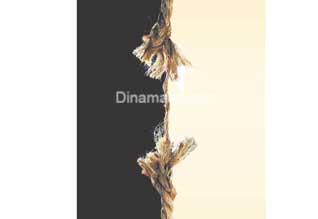மன்னர்கால கல்வெட்டை உதாரணம் காட்டி பேசினால் கம்முனிசவியாதிகளாலும், நவீன ஜனநாயக (!) வியாதிகளாலும், பிற்போக்கு என்றும் கொடுங்கோலன் என்றும் முத்திரை குத்தப்படுவோம். இன்று உலக மரண தண்டனை எதிர்ப்பு தினம்...நல்லதுக்கு காலமில்லை. பேய் அரசாண்டால் ..பிணம் தின்னும் சாத்திரங்கள்..
லஞ்சம் வாங்கினாலும், கொடுத்தாலும் மரண தண்டனை விதித்த மன்னன்: 700 ஆண்டுகளுக்கு முந்தைய கல்வெட்டில் தகவல்

தமிழகத்தில் மன்னர்கள் ஆட்சி காலத்தில் லஞ்சம் கொடுத்தாலும், வாங்கினாலும் மற்றும் அதைத் தடுக்கத் தவறிய அரசு அதிகாரிக்கும் மரண தண்டனை வழங்க மன்னன் ஆணை பிறப்பித்த கல்வெட்டு கண்டுபிடிக்கப்பட்டுள்ளது.
கிருஷ்ணகிரி மாவட்டம் காவேரிப்பட்டணம் அருகே உள்ளது பென் னேஸ்வரமடம் கிராமம். இங்குள்ள பென்னேஸ்வரர் கோயில் மிகவும் பழமையானது, பிரசித்திபெற்றது. இந்தக் கோயில் கல்வெட்டில் லஞ்சம் வாங்கினாலும், கொடுத்தாலும் மற்றும் அதை தடுக்கத் தவறிய அதிகாரிகளுக்கும் மரண தண்டணை விதிக்கும் வகையில் மன்னன் ஆணையிட்ட கல்வெட்டு உள்ளது.
இது குறித்து கிருஷ்ணகிரி மாவட்ட வரலாற்று மையத்தைச் சேர்ந்த ஆய்வாளர் சுகவன முருகன் ‘தி இந்து’விடம் கூறியதாவது: கிருஷ்ணகிரி மாவட்டத்தில் ஏழு நிலைகளைக் கொண்ட பெரிய ராஜகோபுரம் இருக்கும் கோயில்பென்னேஸ்வர மடம் கோயிலாகும். இது பிற்காலச் சோழர் காலக் கோயிலாகும். சுமார் ஆயிரம் ஆண்டுகள் பழமையான இக்கோயி லில் ஏராளமான கல்வெட்டுகள் உள்ளன. சோழர்கள், போசாளர்கள் மற்றும் விஜயநகரப் பேரரசுகளின் ஆட்சியில் இக்கோயிலுக்கு பலவிதமான கொடைகள், தானங்கள் வழங்கப்பட்டதாக கல்வெட்டில் குறிப்பிடப்பட்டுள்ளது.
இவ்வாறு தானமாகப் பெறப் பட்ட நிலங்கள், ஊர்கள் மற்றும் பொது சொத்துகளை சிலர் ஏய்த்துஅனுபவித்துள்ளனர். இதனை அறிந்த பேரரசன் வீர ராமநாதன் ஒரு ஆணையை வெளியிட்டுள்ளார். அந்த ஆணை தொடர்பான கல்வெட்டு தற்போது கண்டுபிடிக்கப்பட்டுள்ளது.
போசாள மன்னன் வீர ராமநாதன் கல்வெட்டு
"ஸ்ரீ வீரராமந்நாத தேவரீஸர்க்கு யாண்டு நாற்பத்தொன்றாவது உடையார் பெண்ணையாண்டார் மடத்தி லும் பெண்ணை நாயனார் தேவதானமான ஊர்களிலும் ஒரு அதிகாரியாதல் கணக்கர் காரியஞ் செய்வார்களாதல் கூசராதல் ஆரேனுமொருவர் வந்து விட்டது விடாமல் சோறு வேண்டுதல் மற்றேதேனும் நலிவுகள் செய் குதல் செய்தாருண்டாகில் தாங்களே அவர்களைத் தலையைஅறுத்துவிடவும் அப்படி செய்திலர் களாதல் தங்கள் தலைகளோடே போமென்னும்படிறெயப்புத்த பண்ணி இதுவே சாதனமாகக் கொண்டு ஆங்கு வந்து நலிந்தவர் களைத் தாங்களே ஆஞ்ஞை பண்ணிக் கொள்ளவும் சீ காரியமாகத்தாங்க . . . த. . . போதும் போன அமுதுபடிக் குடலாக ஸர்வ மானிய மாகக் குடுத்தோம். அனைத் தாயமு விட்டுக்கு . . .கூசர் உள்ளிட் டார் பையூரிலே இருக்கவும் சொன்னோம். இப்படியாதே இதுக்கு விலங்கனம் பன்னினவன் கெங்கைக் கரையில் குராற் பசுவைக் கொன்றான் பாவத்தைக் கொள்வான்" என எழுதப்பட்டுள்ளது.
இதன் விளக்கம், லஞ்சம் வாங்கினால், கொடுத்தால் சிரச்சேதம் செய்ய அதாவது தலையை வெட்டும் படியும் அவ்வாறு நிகழாமல் தடுக்கத் தவறினால் அதற்குப் பொறுப்பான அதிகாரிகளின் தலையை வெட்டும்படியும் ஆணை வெளியிட்டுள்ளார். இக்கல்வெட்டு கோயிலின் தெற்கு சுவர் பகுதியில் இருக்கிறது. இக்கல்வெட்டு கிரந்தம் மற்றும் தமிழில் வடிக்கப்பட்டுள்ளது.
லஞ்சமாக உணவு அல்லது சோறு கேட்டால் கூட குற்றம் என்றும் அரசர் சொல்லியிருக்கிறார். மேற் கண்ட பேரரசர் வீரராமநாதனின் கல்வெட்டைக் கொண்டும், தலைபலிக் கற்களின் சிற்ப அமைப்பைக் கொண்டும் இவ்வாறு தண்டிக்கப் பட்டிருக்கக் கூடும் என்பது தெரிகிறது. இது தமிழக வரலாற்றில் மிக முக்கியமானதாகும்.
இந்தக் கல்வெட்டை போசாளப் பேரரசன் வீரராமநாதனின் நாற்பத்தி ஒன்றாவது ஆட்சியாண்டில் இந்த உத்தரவுப் பிறப்பிக்கப்பட்டிருக் கிறது. கல்வெட்டு வெட்டப்பட்ட ஆண்டு கி.பி.1295 என குறிப்பிடப் பட்டுள்ளது.
Source :
http://tamil.thehindu.com/opinion/reporter-page/%E0%AE%B2%E0%AE%9E%E0%AF%8D%E0%AE%9A%E0%AE%AE%E0%AF%8D-%E0%AE%B5%E0%AE%BE%E0%AE%99%E0%AF%8D%E0%AE%95%E0%AE%BF%E0%AE%A9%E0%AE%BE%E0%AE%B2%E0%AF%81%E0%AE%AE%E0%AF%8D-%E0%AE%95%E0%AF%8A%E0%AE%9F%E0%AF%81%E0%AE%A4%E0%AF%8D%E0%AE%A4%E0%AE%BE%E0%AE%B2%E0%AF%81%E0%AE%AE%E0%AF%8D-%E0%AE%AE%E0%AE%B0%E0%AE%A3-%E0%AE%A4%E0%AE%A3%E0%AF%8D%E0%AE%9F%E0%AE%A9%E0%AF%88-%E0%AE%B5%E0%AE%BF%E0%AE%A4%E0%AE%BF%E0%AE%A4%E0%AF%8D%E0%AE%A4-%E0%AE%AE%E0%AE%A9%E0%AF%8D%E0%AE%A9%E0%AE%A9%E0%AF%8D-700-%E0%AE%86%E0%AE%A3%E0%AF%8D%E0%AE%9F%E0%AF%81%E0%AE%95%E0%AE%B3%E0%AF%81%E0%AE%95%E0%AF%8D%E0%AE%95%E0%AF%81-%E0%AE%AE%E0%AF%81%E0%AE%A8%E0%AF%8D%E0%AE%A4%E0%AF%88%E0%AE%AF-%E0%AE%95%E0%AE%B2%E0%AF%8D%E0%AE%B5%E0%AF%86%E0%AE%9F%E0%AF%8D%E0%AE%9F%E0%AE%BF%E0%AE%B2%E0%AF%8D-%E0%AE%A4%E0%AE%95%E0%AE%B5%E0%AE%B2%E0%AF%8D/article6485964.ece
வேண்டும்... ஆனால் வேண்டாம்...-இன்று உலக மரண தண்டனை எதிர்ப்பு தினம்
இந்தியா உள்ளிட்ட சில நாடுகளில், கொடுமையான குற்றங்களில் ஈடுபடும் குற்றவாளிகளுக்கு மரண தண்டனை விதிக்கப்படுகிறது. உலகில் மூன்றில் இரண்டு பங்கு நாடுகள் குற்றவாளிகளுக்கு மரண தண்டனை விதிக்கும் சட்டங்களை தடை செய்துள்ளன. இதனை அனைத்து நாடுகளும் பின்பற்ற வலியுறுத்தி, அக்.,10ம் தேதி, உலக மரண தண்டனை எதிர்ப்பு தினம் கடைப்பிடிக்கப்படுகிறது. 2002 மே.13ல் ரோமில் கூடிய சர்வதேச தொண்டு நிறுவனங்களின் (என்.ஜி.ஓ) கூட்டத்தில், மரண தண்டனையை ரத்து செய்யவும், மரண தண்டனை எதிர்ப்பு இயக்கத்தை வளர்க்க வேண்டும் எனவும் தீர்மானம் நிறைவேற்றப்பட்டது.
2003 அக்.10ல் முதல் முதலாக இத்தினம் கடைப்பிடிக்கப்பட்டது. செய்யாத குற்றம், மொழி புரியாததால் அடைந்த தண்டனை, ஆராயப்படாத நீதி, மூளை வளர்ச்சி இல்லாதவர் செய்த குற்றம், சிறுவயதில் செய்த குற்றம் ஆகியவை காரணமாக, உலகில் ஐந்து பேருக்கு மரண தண்டனை நிறைவேற்றப்பட்டது. நீதி இல்லாமல் அநீதியாக 5 பேர் மரண தண்டனை பெற்றனர். இனி இதுபோல் நடக்காமல் இருக்க, மரண தண்டனையை உலக நாடுகள் ரத்து செய்ய வேண்டும் என மரண தண்டனை எதிர்ப்புக் குழுவினர் கோரிக்கை வைக்கின்றனர்.
இந்தியாவில் அரிதிலும் அரிதான குற்றங்களுக்கு மட்டுமே மரண தண்டனை தரப்படுகிறது. இது குறித்து 2 விதமான கருத்துகள் நாட்டில் நிலவுகிறது. மரண தண்டனை விதிப்பதன் மூலம், குற்றங்கள் குறையும் என ஒரு சாராரும், குற்றவாளிகளை கொல்லும் உரிமை யாருக்கும் இல்லை என எதிர்தரப்பும் வாதிடுகின்றனர். 2012ம் ஆண்டு கணக்கின் படி, இந்தியாவில் 477 மரண தண்டனை கைதிகள் சிறையில் உள்ளனர் என "அம்னெஸ்டி இன்டர்நேஷனல்' அமைப்பின் ஆய்வில் தெரிவிக்கப்பட்டுள்ளது. 1995 முதல் 2012 வரை 20 பேருக்கு மரண தண்டனை விதிக்கப்பட்டுள்ளது. உலகளவில் அதிகளவில் மரண தண்டனை நிறைவேற்றும் நாடுகளின் பட்டியிலில் சீனா, ஈரான், ஈராக், சவுதி ஆகியவை முதல் 4 இடங்களில் உள்ளன.
வேண்டும்... ஆனால் வேண்டாம்...-இன்று உலக மரண தண்டனை எதிர்ப்பு தினம்
இந்தியா உள்ளிட்ட சில நாடுகளில், கொடுமையான குற்றங்களில் ஈடுபடும் குற்றவாளிகளுக்கு மரண தண்டனை விதிக்கப்படுகிறது. உலகில் மூன்றில் இரண்டு பங்கு நாடுகள் குற்றவாளிகளுக்கு மரண தண்டனை விதிக்கும் சட்டங்களை தடை செய்துள்ளன. இதனை அனைத்து நாடுகளும் பின்பற்ற வலியுறுத்தி, அக்.,10ம் தேதி, உலக மரண தண்டனை எதிர்ப்பு தினம் கடைப்பிடிக்கப்படுகிறது. 2002 மே.13ல் ரோமில் கூடிய சர்வதேச தொண்டு நிறுவனங்களின் (என்.ஜி.ஓ) கூட்டத்தில், மரண தண்டனையை ரத்து செய்யவும், மரண தண்டனை எதிர்ப்பு இயக்கத்தை வளர்க்க வேண்டும் எனவும் தீர்மானம் நிறைவேற்றப்பட்டது.
2003 அக்.10ல் முதல் முதலாக இத்தினம் கடைப்பிடிக்கப்பட்டது. செய்யாத குற்றம், மொழி புரியாததால் அடைந்த தண்டனை, ஆராயப்படாத நீதி, மூளை வளர்ச்சி இல்லாதவர் செய்த குற்றம், சிறுவயதில் செய்த குற்றம் ஆகியவை காரணமாக, உலகில் ஐந்து பேருக்கு மரண தண்டனை நிறைவேற்றப்பட்டது. நீதி இல்லாமல் அநீதியாக 5 பேர் மரண தண்டனை பெற்றனர். இனி இதுபோல் நடக்காமல் இருக்க, மரண தண்டனையை உலக நாடுகள் ரத்து செய்ய வேண்டும் என மரண தண்டனை எதிர்ப்புக் குழுவினர் கோரிக்கை வைக்கின்றனர்.
இந்தியாவில் அரிதிலும் அரிதான குற்றங்களுக்கு மட்டுமே மரண தண்டனை தரப்படுகிறது. இது குறித்து 2 விதமான கருத்துகள் நாட்டில் நிலவுகிறது. மரண தண்டனை விதிப்பதன் மூலம், குற்றங்கள் குறையும் என ஒரு சாராரும், குற்றவாளிகளை கொல்லும் உரிமை யாருக்கும் இல்லை என எதிர்தரப்பும் வாதிடுகின்றனர். 2012ம் ஆண்டு கணக்கின் படி, இந்தியாவில் 477 மரண தண்டனை கைதிகள் சிறையில் உள்ளனர் என "அம்னெஸ்டி இன்டர்நேஷனல்' அமைப்பின் ஆய்வில் தெரிவிக்கப்பட்டுள்ளது. 1995 முதல் 2012 வரை 20 பேருக்கு மரண தண்டனை விதிக்கப்பட்டுள்ளது. உலகளவில் அதிகளவில் மரண தண்டனை நிறைவேற்றும் நாடுகளின் பட்டியிலில் சீனா, ஈரான், ஈராக், சவுதி ஆகியவை முதல் 4 இடங்களில் உள்ளன.

2003 அக்.10ல் முதல் முதலாக இத்தினம் கடைப்பிடிக்கப்பட்டது. செய்யாத குற்றம், மொழி புரியாததால் அடைந்த தண்டனை, ஆராயப்படாத நீதி, மூளை வளர்ச்சி இல்லாதவர் செய்த குற்றம், சிறுவயதில் செய்த குற்றம் ஆகியவை காரணமாக, உலகில் ஐந்து பேருக்கு மரண தண்டனை நிறைவேற்றப்பட்டது. நீதி இல்லாமல் அநீதியாக 5 பேர் மரண தண்டனை பெற்றனர். இனி இதுபோல் நடக்காமல் இருக்க, மரண தண்டனையை உலக நாடுகள் ரத்து செய்ய வேண்டும் என மரண தண்டனை எதிர்ப்புக் குழுவினர் கோரிக்கை வைக்கின்றனர்.
வேண்டும்... ஆனால் வேண்டாம்...-இன்று உலக மரண தண்டனை எதிர்ப்பு தினம்
இந்தியா உள்ளிட்ட சில நாடுகளில், கொடுமையான குற்றங்களில் ஈடுபடும் குற்றவாளிகளுக்கு மரண தண்டனை விதிக்கப்படுகிறது. உலகில் மூன்றில் இரண்டு பங்கு நாடுகள் குற்றவாளிகளுக்கு மரண தண்டனை விதிக்கும் சட்டங்களை தடை செய்துள்ளன. இதனை அனைத்து நாடுகளும் பின்பற்ற வலியுறுத்தி, அக்.,10ம் தேதி, உலக மரண தண்டனை எதிர்ப்பு தினம் கடைப்பிடிக்கப்படுகிறது. 2002 மே.13ல் ரோமில் கூடிய சர்வதேச தொண்டு நிறுவனங்களின் (என்.ஜி.ஓ) கூட்டத்தில், மரண தண்டனையை ரத்து செய்யவும், மரண தண்டனை எதிர்ப்பு இயக்கத்தை வளர்க்க வேண்டும் எனவும் தீர்மானம் நிறைவேற்றப்பட்டது.
இந்தியாவில் அரிதிலும் அரிதான குற்றங்களுக்கு மட்டுமே மரண தண்டனை தரப்படுகிறது. இது குறித்து 2 விதமான கருத்துகள் நாட்டில் நிலவுகிறது. மரண தண்டனை விதிப்பதன் மூலம், குற்றங்கள் குறையும் என ஒரு சாராரும், குற்றவாளிகளை கொல்லும் உரிமை யாருக்கும் இல்லை என எதிர்தரப்பும் வாதிடுகின்றனர். 2012ம் ஆண்டு கணக்கின் படி, இந்தியாவில் 477 மரண தண்டனை கைதிகள் சிறையில் உள்ளனர் என "அம்னெஸ்டி இன்டர்நேஷனல்' அமைப்பின் ஆய்வில் தெரிவிக்கப்பட்டுள்ளது. 1995 முதல் 2012 வரை 20 பேருக்கு மரண தண்டனை விதிக்கப்பட்டுள்ளது. உலகளவில் அதிகளவில் மரண தண்டனை நிறைவேற்றும் நாடுகளின் பட்டியிலில் சீனா, ஈரான், ஈராக், சவுதி ஆகியவை முதல் 4 இடங்களில் உள்ளன.
http://www.dinamalar.com/news_detail.asp?id=1088883












